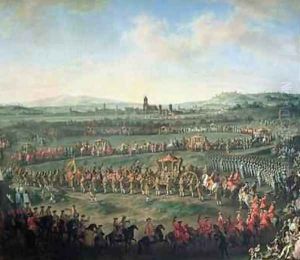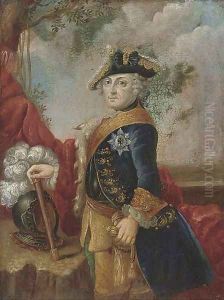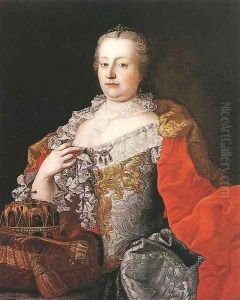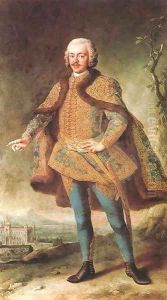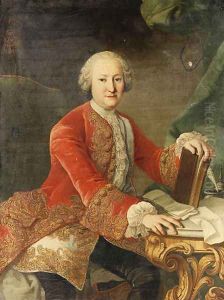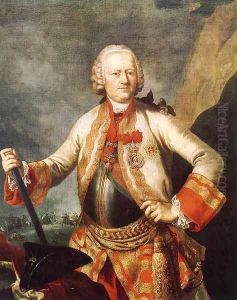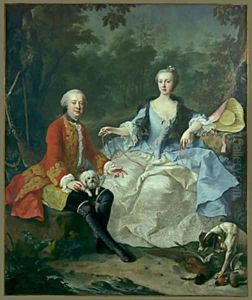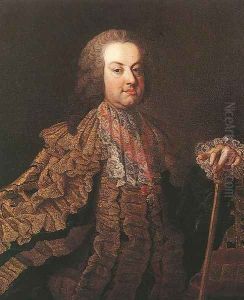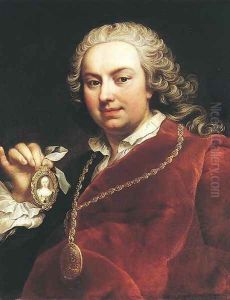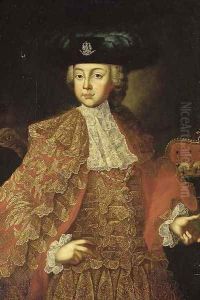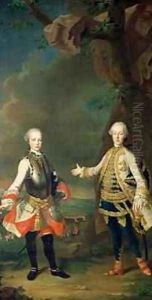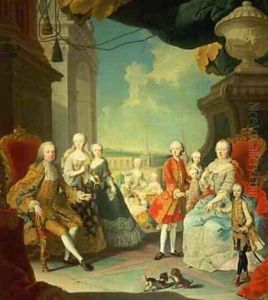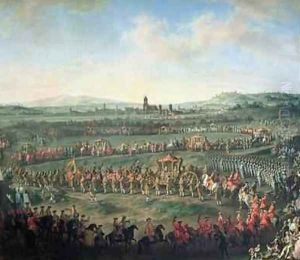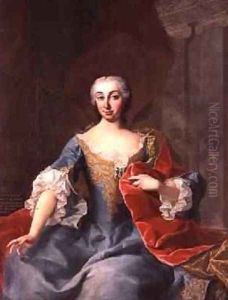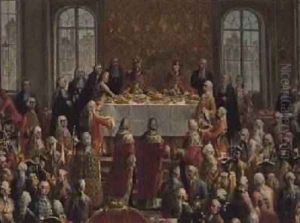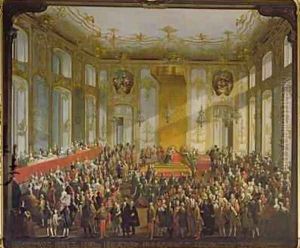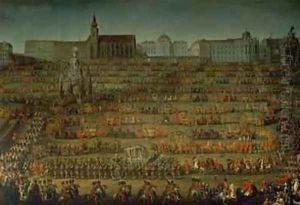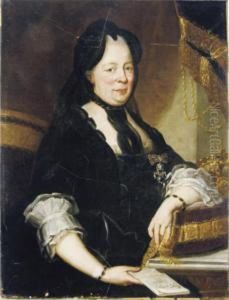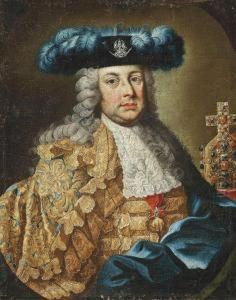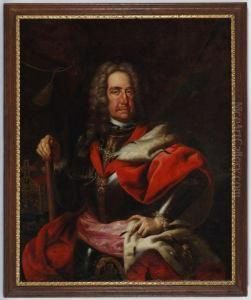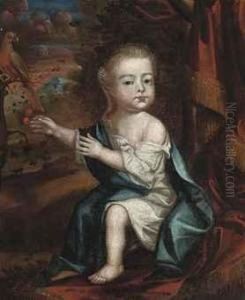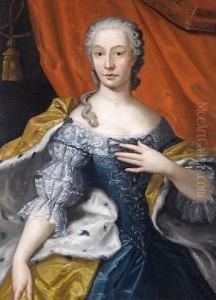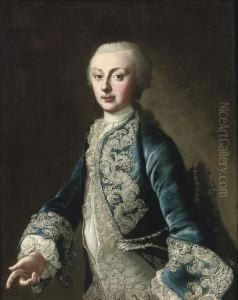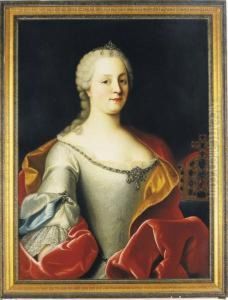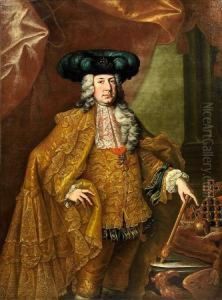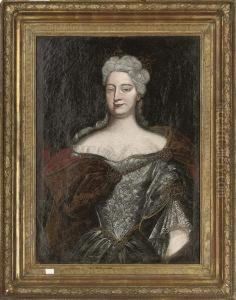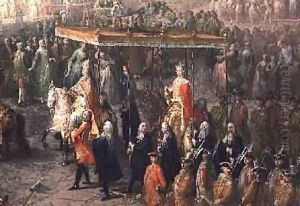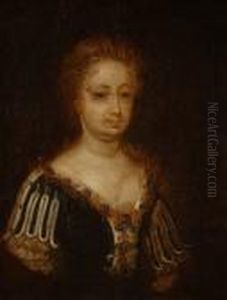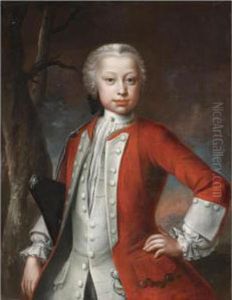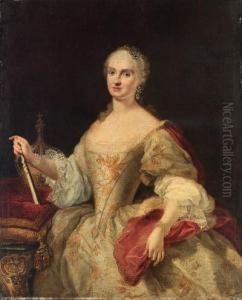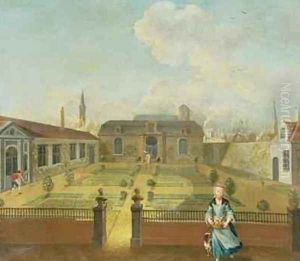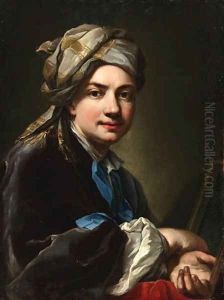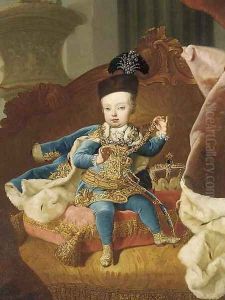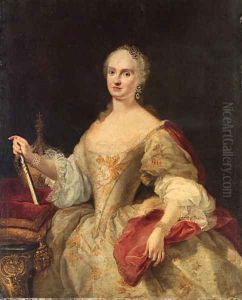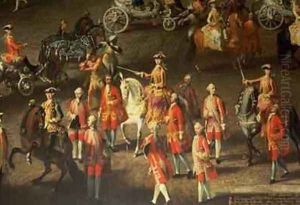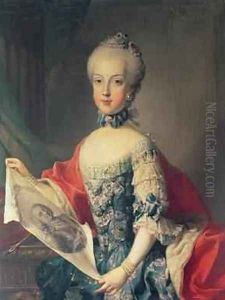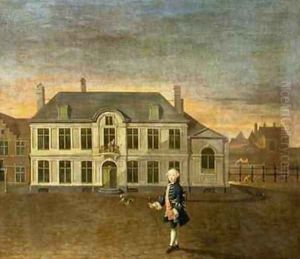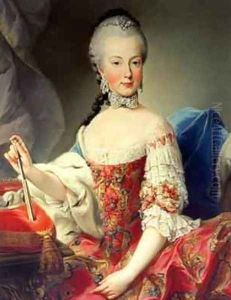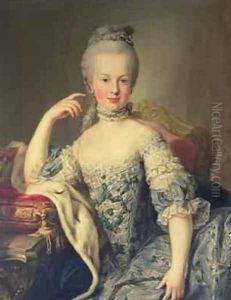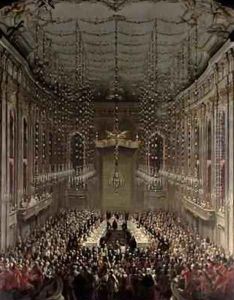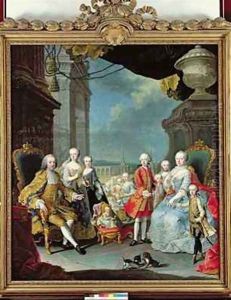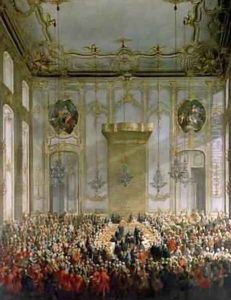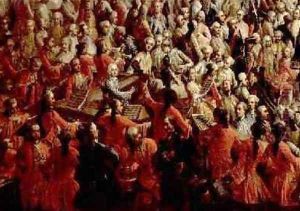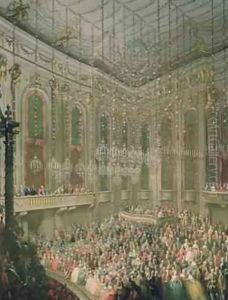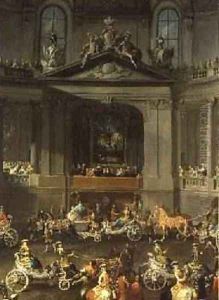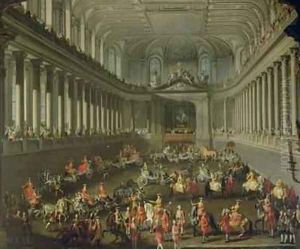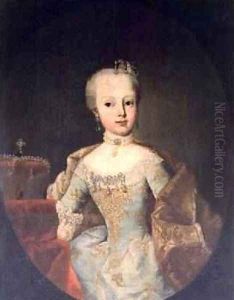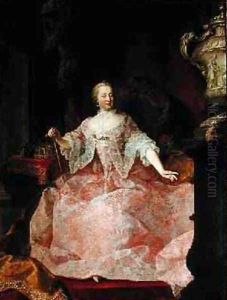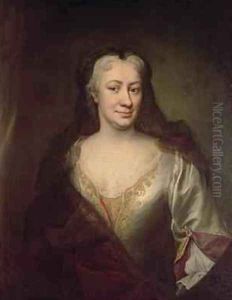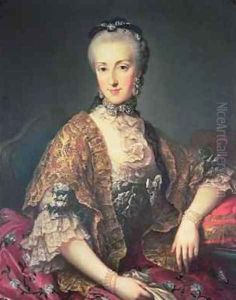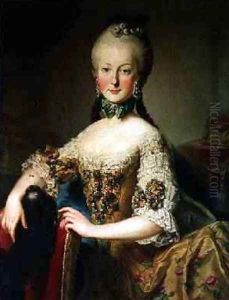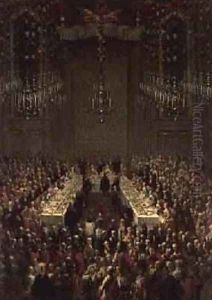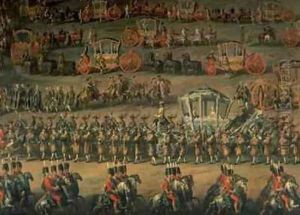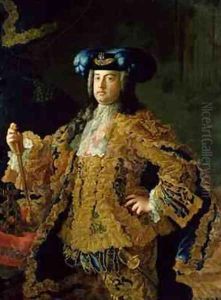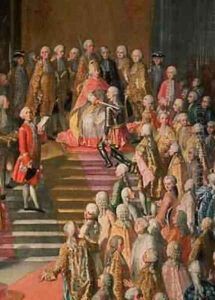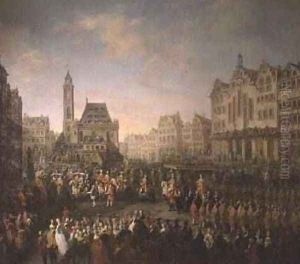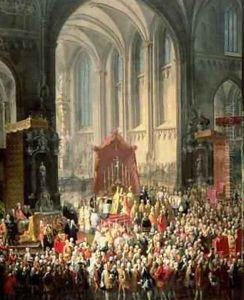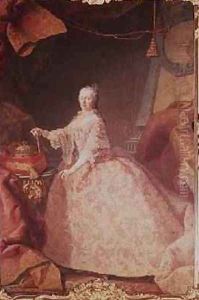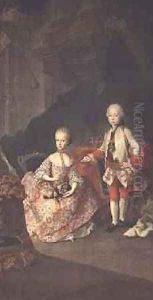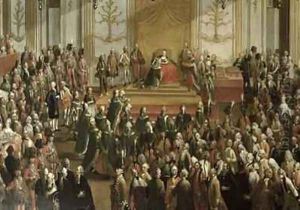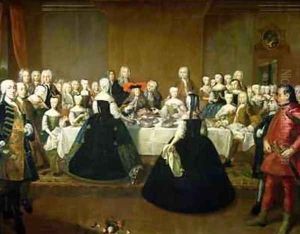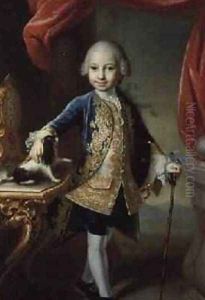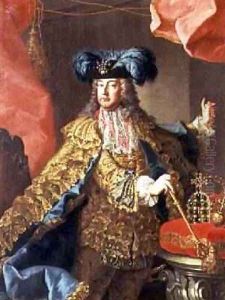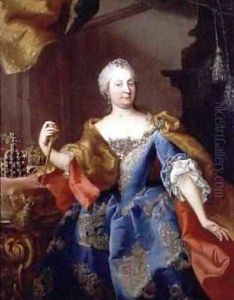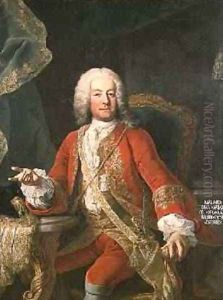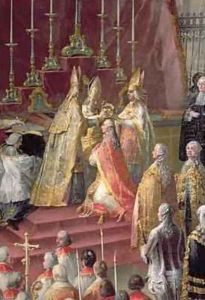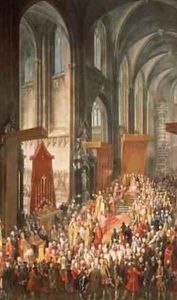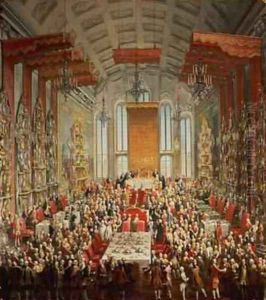Martin II Mytens or Meytens Paintings
Martin van Meytens, also known as Martin II Mytens or Meytens, was an Austrian painter who became famous for his portraits. Born in 1695 in Stockholm, Sweden, he was part of a family with a strong artistic tradition. His father, Martin van Meytens the Elder, was a painter as well, and his uncles were also involved in the arts. Meytens received his early training from his father before traveling extensively in Europe to further his education in painting.
Meytens spent a significant amount of time in Italy, particularly in Rome, where he studied and worked until about 1724. During his Italian sojourn, he became influenced by the works of the Italian masters, which is evident in his technique and use of color.
In the 1720s, Meytens moved to Vienna, Austria, where he quickly became a popular court painter. His ability to capture the likeness and character of his subjects was highly regarded. He worked for the imperial family and painted numerous portraits of Emperor Charles VI, his wife Elisabeth Christine, and later Maria Theresa. Meytens's portraits were known for their elegance, attention to detail, and the rich textures he could evoke in the representation of fabrics and jewels.
Meytens was appointed court painter in 1732, and his reputation continued to grow. He established a large studio in Vienna, which helped him to manage the numerous commissions from the royal family, nobility, and wealthy bourgeoisie. His style was quite representative of the Baroque period but later evolved to incorporate elements of the Rococo.
Later in his career, Meytens started to face competition from younger artists, and his popularity began to wane. However, he continued to work and contributed significantly to the art scene in Vienna until his death in 1770. Meytens was also a teacher, and his studio trained several important painters of the next generation.
His legacy is preserved in the many portraits that hang in palaces and museums across Europe. These works continue to offer insights into the fashion, culture, and individuals of the 18th century Habsburg court.
